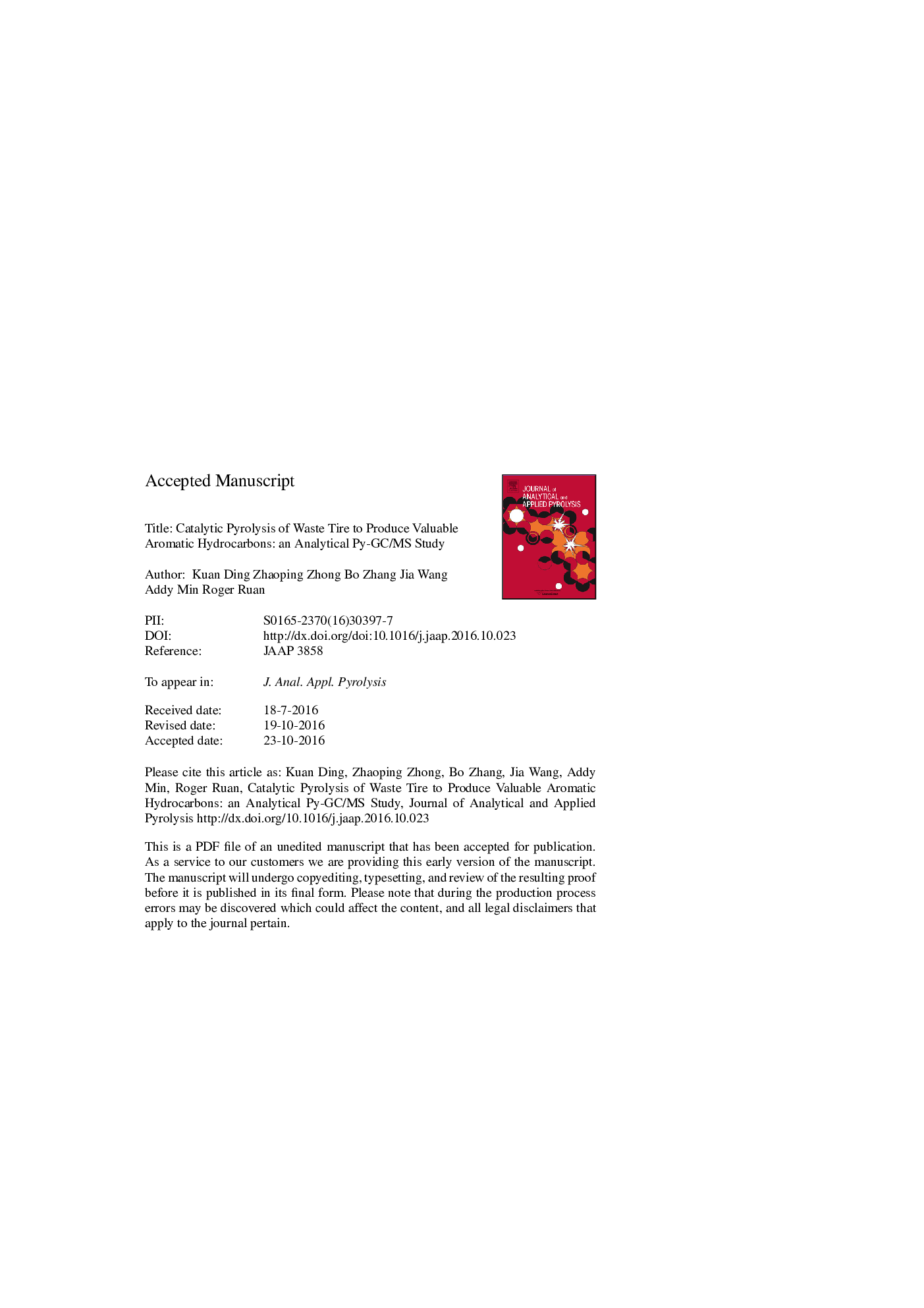| Article ID | Journal | Published Year | Pages | File Type |
|---|---|---|---|---|
| 5134754 | Journal of Analytical and Applied Pyrolysis | 2016 | 34 Pages |
Abstract
Pyrolysis of waste tire with HY, HZSM-5 (HZ) and purified attapulgite (PA) catalysts to produce valuable aromatic hydrocarbons has been carried out in a Pyrolyzer- Gas Chromatograph/Mass Spectrum (Py-GC/MS) reactor. Likewise, d-limonene and polybutadiene rubber (BR), which played important roles in the pyrolysis process of waste tire, has also been pyrolyzed in the Py-GC/MS reactor with these catalysts. Based on the product distribution, the catalytic pyrolysis mechanisms of d-limonene were proposed, while those of BR were extended. With these mechanisms, the catalytic pyrolysis characteristics of waste tire could be explained reasonably. Results showed that HY promoted a dramatic increase of aromatics from pyrolysis of d-limonene and BR, leading to the considerable growth of aromatics in the degraded products of waste tire. The shape selectivity of HZ to mono-cyclic aromatics performed effectively in the pyrolysis of BR, yet it exhibited a weak performance in the pyrolysis of d-limonene. As a result, upon the catalytic pyrolysis of waste tire, HZ was inferior to HY in the aromatization ability. However, the selectivity of HZ to BTXE (benzene, toluene, xylene and ethylbenzene) was superior to that of HY. PA performed a weaker catalytic ability in promoting the production of aromatics during the pyrolysis of d-limonene, BR and waste tire.
Related Topics
Physical Sciences and Engineering
Chemistry
Analytical Chemistry
Authors
Kuan Ding, Zhaoping Zhong, Bo Zhang, Jia Wang, Addy Min, Roger Ruan,
